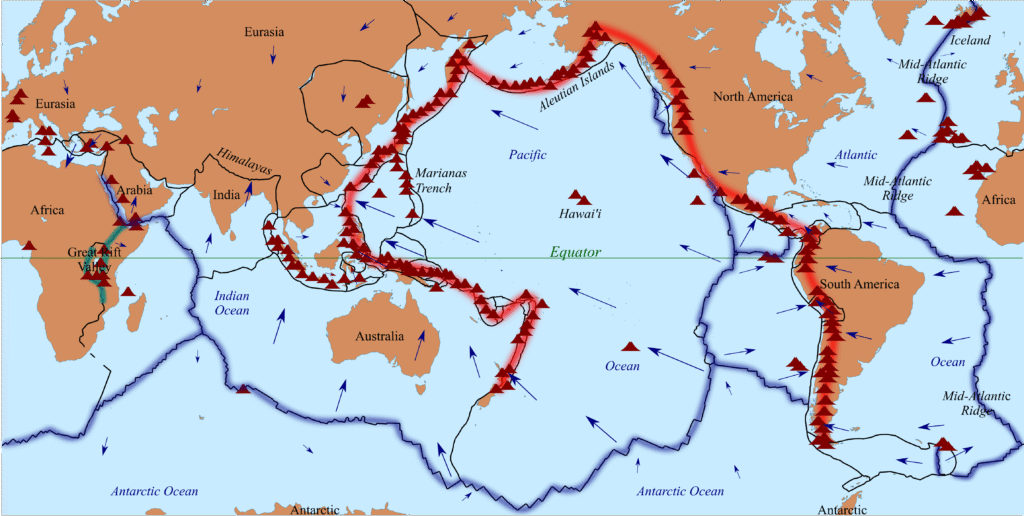In 1967, Dan McKenzie and Robert Parker wrote a paper, “The North Pacific: an example of tectonics on a sphere”. It provided the missing mathematical piece for the theory of plate tectonics. Scientists already knew that continents were moving (continental drift) and that new seafloor was being created (seafloor spreading). But they didn’t have a clear, precise way to describe how these massive, rigid pieces of Earth’s crust were moving across a round planet.
McKenzie and Parker’s key contribution was using Euler’s Theorem to explain the motion of tectonic plates.
Earth’s Surface: A Giant Jigsaw Puzzle
Imagine Earth’s outer shell not as a continuous, static surface, but as a dynamic jigsaw puzzle made of enormous, rigid pieces. These are our tectonic plates. McKenzie and Parker’s genius was to model this system mathematically. They proposed that all the action—earthquakes, volcanoes, mountain building—happens at the boundaries where these plates interact, while the plate interiors remain largely stable and undeformed.
Euler’s Theorem
To describe the movement of these rigid plates on a spherical Earth, they turned to a mathematical principle known as Euler’s Theorem. Simply put, this theorem states that any movement of a rigid body on a sphere can be described as a rotation around a fixed axis that passes through the centre of that sphere. This imaginary point on the surface where the axis emerges is called the Euler pole.
By applying Euler’s Theorem, McKenzie and Parker could precisely describe the relative motion of any two plates. They showed that plates aren’t just sliding past each other randomly; they’re rotating around specific points, and this rotation dictates the type of boundary between them:
- Divergent Boundaries: Where plates move apart (like at mid-ocean ridges).
- Convergent Boundaries: Where plates collide (leading to subduction zones and mountain ranges).
- Transform Boundaries: Where plates slide horizontally past each other (like the San Andreas Fault).
Evidence From Earthquakes
Their model wasn’t just theoretical; it was powerfully supported by real-world data. They showed a striking correlation between their predicted plate motions and the actual slip vectors of earthquakes. In other words, the direction in which the ground moved during an earthquake perfectly matched the direction their model said the plates should be moving. This was a huge validation, confirming that their rigid-plate model accurately described the Earth’s dynamic behaviour.
Why Was This Paper So Important?
McKenzie and Parker’s 1967 paper wasn’t just another contribution; it was a game-changer. It provided the much-needed mathematical framework that unified disparate observations and hypotheses into a single, cohesive theory. It turned the concept of plate tectonics from a compelling idea into a robust, predictive scientific model.
Their work was a breakthrough because it:
- Unified Everything: It brought together continental drift and seafloor spreading into one cohesive, mathematical model.
- Made It Predictable: It allowed scientists to predict the direction and rate of plate movement, which they then confirmed by looking at real-world data from earthquakes and fault lines.

